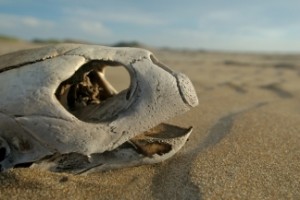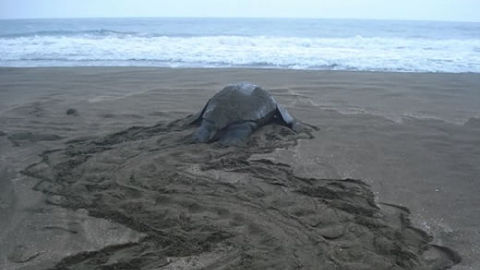Costa Rica News – Costa Rica is actively marketing itself as one of, if not the top spot for eco-tourism. And why not? It boasts a diverse plant and wildlife, a considerable number of which can only be found in the tropical country, housed in expansive parks and reserves. It also possesses beautiful beaches and the surrounding waters is home to a wide variety of game fish.
 However, recent events are making it more apparent that the green image of Costa Rica may be starting to fade.
However, recent events are making it more apparent that the green image of Costa Rica may be starting to fade.
One of the perennial problems that leads to the statement above is the poverty. People need a roof over their head and food in their mouths. So what would they do?
A considerable number turn to poaching, and one of the more prominent target of this practice is the leatherback turtle. The eggs alone costs around a dollar per piece, and the endangered reptile lays around 50 to 200. This is a hefty sum for the underemployed so despite the prohibitions in trading, the practice continues to endure. Last Thursday, September 5, 2013, officials of the Tortuguero National Park reported that 60,000 turtle eggs as well as 30 turtles have been stolen within the period of 1 week.
These eggs are considered as a delicacy, and even used to trade for illegal drugs.
Conservationists have also tried to compromise with these locals, converting some to their cause by hiring them to join their beach patrols to relocate leatherback nests. However, the funding for these organizations are not deep and most rely on donations. What’s more, tensions gradually escalate, and conflicts arise here and there. Death threats and even attacks is something that volunteers had to cope with, and in the case of Jairo Mora, a prominent local advocate of the preservation of these animals, the encounter was fatal.
Private efforts are not the only recipient of these attacks.
Just a week ago, a park ranger and a volunteer were attacked while trying to stop illegal hunting in Puriscal. Their vehicle was stoned, and the volunteer suffered a stab wound to the groin.
What’s even more alarming is the inefficient way that the police force handle such cases. In the case stated above, the park ranger was under equipped to deal with the attack, and the perpetrator was set free after being called for a deposition.
This underlines the next reason why Costa Rica’s green image becomes questionable, which is corruption in its law enforcement. After all, all the laws put in place, all the efforts exerted by various environmental groups, and reforms geared to address environmental issues would be fruitless if the police are tolerant to poachers and in the payroll of criminal organizations.
Even the United Nations have expressed concern in the increasing violent attacks to volunteers. Yoriko Yosukawa, resident coordinator of the United Nations System, said that Costa Rica needed to “effectively enforce the Indian Act of 1977, which expressly protects the right of indigenous communities to their territories.”
You have to wonder how high this corruption actually goes in the Costa Rican government.
If these issues are not properly addressed and resolved, Costa Rica is bound to suffer an economic blow, since eco-tourism is one of the most prominent industries in the nation. This would lead to further loss of jobs, further fueling the vicious cycle.If it can’t protect the people who risk life and limb to protect the country’s wonderful flora and fauna, then less and less people and organizations would be willing to help preserve its innate treasures.
Costa Rica is at a crossroads and the “green” image that it is trying to portray in it’s various tourism campaigns. There are serious problems that need to be addressed now by the government of Costa Rica. If they allow these issues to persist then Costa Rica and it’s green image will die.

